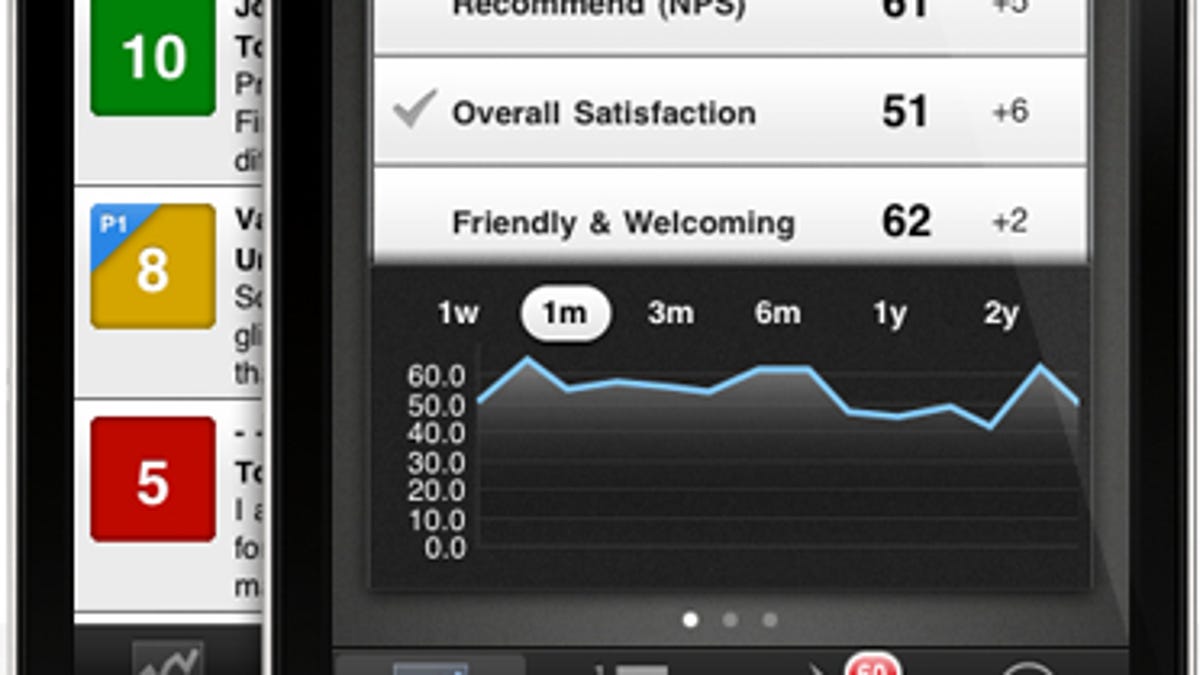Bringing customer intelligence to the iPhone (Q&A)
Customer intelligence software provider Medallia is bringing real-time analytics and information about customer preferences to the iPhone and iPad.

In a recent conversation about predictive analytics, I learned how Wal-Mart Stores uses statistical modeling to better understand the habits and tendencies of its customers--and how businesses can use this data to drive competitive pricing to dominate a market.
Imagine that same type of customer intelligence, delivered almost instantaneously, into the hands of store managers on-site or corporate executives on their iPhone or iPad.
That's what Medallia, a provider of customer feedback and performance data software, aims to provide with a new offering this week on the heels of the new iPhone 4 announcement. Medallia gets its information from all those survey requests you receive from hotels, retailers, banks, and other consumer services.
According to Medallia CEO and co-founder Borge Hald, this data, when mined properly, can let a brand executive at Nike, for example, know what customers think about Kobe Bryant's new sneaker across U.S. regions, or it could enable the manager of a Four Seasons hotel to tell corporate headquarters which new concierge services received the best responses from guests. Apple's iPhone and iPad offer an easy-to-use interface for this data, helping managers to make decisions in near real time.
I caught up with Hald this week to discuss customer experience management and its new mobile application.
Q: What do you mean by "customer experience management," and why does it matter?
Hald: Customer experience management (CEM) goes by a lot of names--customer intelligence, enterprise feedback management, even social CRM, to name a few--but it is the practice of using customer feedback to improve operations and sales. Not to be confused with CRM, which focuses on streamlining the sales cycle, CEM is actually a complementary system that is more focused on the actual interactions customers have with brands.
Currently, it's the big brands in hospitality, retail, and financial services that have made investments in customer experience. What we found with our customers was that though the initial goal for most of them was to save risky customers from switching brands, they also saw a boost in revenue. In fact, our clients are in sectors that were hit the hardest by the recession, but they all saw revenue growth during this period.
How do you see customer analytics delivering value over the iPhone?
Hald: Ultimately, we want to help companies become better at listening to customers and acting on that feedback. Call centers, Web surveys, social networks like Facebook and Twitter, online forums, and receipt-based surveys are all hard-to-monitor sources of customer experience intel.
Customer intelligence is used for decision making from a local level to the boardroom. Most people who interact with customers don't sit behind a desk all day, so we needed to put information on something that's carried with them--like their iPhone. Now, whether you're the CIO, a branch employee walking the floors, or a manager in the back office, you get real-time alerts and analytics about performance and customer sentiment.
Do companies pay more attention to social and mobile Web?
Hald: Well, sales revenue is tied tightly to brand names, so a lot of attention shifts to social networks and the mobile Web. Our clients are household names, so if a conversation is taking place across social forums that could impact their brand, they care.
Pundits such as Bruce Temkin, Jeremiah Owyang, and Charlene Li at Altimeter have been big proponents of brands navigating their social personas with customers and listen to the "voice of the customer."
In large part, I agree with them, but I am always telling clients not to let social media overplay its part. Fact is, 80 percent of customer referrals still take place offline, and the case could be that only 4 percent of your customers are online, driving 90 percent of the social conversation. The value in CEM software is extracting customer intelligence from the right channels.

